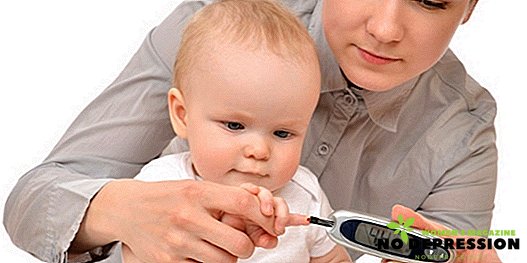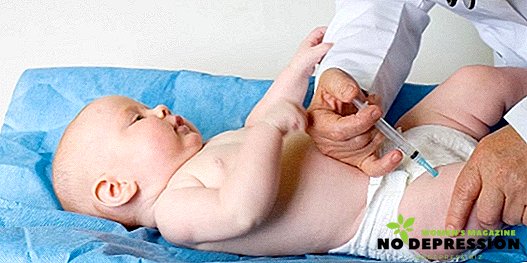Creatinine is produced in the body as a result of muscle work, is carried by the blood to the kidneys and excreted from the body through urine. Its content in the blood is normal constantly, and its increase or decrease is a signal of pathological changes in the state of the muscles or excretory system.
The normal amount of creatinine varies with age - in children it is lower than in adults. Also, men have a physiologically higher level of creatinine due to the greater muscle mass.

Why is it important to check creatinine levels?
The amount of creatinine in the blood is an indicator of the state of the muscles and the work of the urinary system. Its changes can be caused by both physiological and pathological causes.
Basically, the level of this substance in the blood is used to diagnose dehydration, diseases of the kidneys and the cardiovascular system, malignant neoplasms of muscle tissue, hyperthyroidism and radiation sickness.
Changes in the biochemical parameters of blood are one of the earliest signs of the listed diseases, and it makes it possible to identify pathology in the early stages and prescribe the most effective treatment.
The rate of substance in the blood of women
The normal creatinine content varies with age and depends on the amount of muscle mass. In childhood, the norm in boys and girls is the same, since adolescence differences begin to appear, and in adult men the creatinine content is much higher than in women. With age, these differences are smoothed out, but not completely.
Table - norm of creatinine by age (µmol / l):
| Up to 1 month | 1 month - 1 year | 1 - 12 years | 12 - 17 years old | 17 - 60 years | Over 60 | |
| M | 27 - 88 | 18 - 35 | 27 - 62 | 44 - 88 | 74 - 110 | 72 - 127 |
| F | 27 - 88 | 18 - 35 | 27 - 62 | 40 - 78 | 58 - 96 | 53 - 106 |
Creatinine rates in men are listed in the table for comparison. In women, starting from adolescence, there is a clearly visible tendency to a decrease in the amount of this substance in the blood compared to men. This is due to the fact that the muscle mass in women grows much slower and in general is less than in men.
In women, its number decreases during pregnancy, sometimes to half the norm. This is a physiological phenomenon that is not considered a pathological sign. But it has its own danger - with reduced creatinine during pregnancy, it is difficult to recognize its pathological decline, if it occurs.
Why does the level of creatinine in women change?
The level of this substance in the blood depends on the condition of the kidneys and muscles. In women, it may change for physiological or pathological reasons. Physiological causes of increased creatinine:
- Large muscle mass and intense physical activity in women engaged in various sports or engaged in physical labor;
- Meat diet or the use of sports protein mixtures;
- A side effect of some antibiotics.
These factors must be reported to the doctor before taking the test, so that he knows about the possible physiologically high level of creatinine. It can also be lowered under normal conditions for the following reasons:
- Vegetarian diet;
- Pregnancy.
Physiological causes rarely (except pregnancy) lead to a very large change in the amount of creatinine. However, before prescribing the analysis, the doctor must take them into account.
The level of the substance increases when:
- Muscle fiber injuries;
- Myocardial infarction;
- Myositis;
- Hyperthyroidism;
- Tumor processes in muscle tissue;
- Disorders of glomerular filtration in the kidneys;
- Dehydration;
- Low blood pressure;
- Radiation sickness;
- Syndromes accompanied by destruction of muscle tissue.
 The decrease in the level of this substance is observed only in one case - with muscular dystrophy. Not all of these diseases are diagnosed with a blood test.
The decrease in the level of this substance is observed only in one case - with muscular dystrophy. Not all of these diseases are diagnosed with a blood test.
In particular, in case of injuries or dehydration, its elevated level is not the main diagnostic criterion, but an additional indicator that is revealed in the biochemical blood test.
Hypercreatinemia is a laboratory syndrome that does not cause any noticeable manifestations. However, the symptoms of diseases in which the level of creatinine in the blood may increase, serve as a reason for conducting tests, including biochemical research.
When sent for the analysis of creatinine in the blood
Analysis of creatinine is prescribed for the diagnosis and evaluation of the effectiveness of treatment of various diseases of muscle tissue and kidneys. For diagnostic purposes, it is necessary for:
- Constant pain in the muscles of unknown origin;
- Muscle weakness, the appearance of fatigue at the slightest exertion;
- Edema and elevated blood pressure;

- Changes in the amount and appearance of urine, the appearance of pathological changes in the general analysis of urine;
- Lower back pains.
These analyzes can confirm or deny diseases of the muscles and kidneys. With myocardial infarction, creatinine levels also increase, but much more important is the increase in enzymes - alkaline phosphatase and transaminases.
If the diagnosis is already established, changes in the level of the substance can serve as an indicator of the effectiveness of treatment.
Therefore, this analysis is prescribed:
- The cure rate for acute renal failure;
- The relative remission rate for chronic heart or kidney failure;
- Criteria for the effectiveness of treatment of dehydration;
- One of the criteria for the effectiveness of treatment of myocardial infarction;
- Remission rate for radiation sickness and malignant tumors;
- Evaluation of the effectiveness of the treatment of muscular dystrophy and rhabdomyolysis;
- Thyroid disease remission rate.
 In all cases, a sign of recovery or remission is a decrease in the level of creatinine, and only with muscular dystrophy - its increase.
In all cases, a sign of recovery or remission is a decrease in the level of creatinine, and only with muscular dystrophy - its increase.
In addition, to assess the glomerular filtration rate, a concept such as creatinine clearance is used. This is the rate of its excretion by the kidneys.
There are two methods to determine it. The first of these is the collection of daily urine in the same container, after which it determines the amount of creatinine released per day.
The second, more convenient for the patient - a single biochemical analysis of urine, and then the calculation of clearance using a special formula. A clearance test is necessarily assigned at an elevated level of this substance in order to confirm or exclude kidney pathology as a cause of changes in blood biochemical parameters.
How to prepare and pass a blood test for creatinine
Since there are physiological causes that change the level of creatinine in the blood, for more accurate analysis it is necessary to minimize their impact. In particular, one day prior to the survey, it is necessary to abandon meat, dairy products, eggs, sports nutrition, alcohol and physical exertion.
 If the patient takes antibiotics, the analysis is postponed until the end of the course of treatment. Women should not be tested for creatinine during menstruation - at this time its level may be lowered, which may mask the signs of the disease.
If the patient takes antibiotics, the analysis is postponed until the end of the course of treatment. Women should not be tested for creatinine during menstruation - at this time its level may be lowered, which may mask the signs of the disease.
To take the analysis is best in the morning on an empty stomach. Before analysis, you can drink water without gas or a little fruit juice (you can with pulp).
Do not eat, including drinking milk or sour milk drinks, tea or coffee - it is better to do this after analysis. The procedure itself is a blood sampling from a vein. After donating blood, you can safely return to the usual way of life.
For pregnant and lactating mothers, there are separate indicators of the norm depending on the duration of pregnancy. Before taking an analysis, you must consult with a gynecologist.
Possible risks in the analysis
As with any study, a creatinine blood test may not always be performed. In itself, the study is not dangerous for the body.
If blood from a vein is improperly performed, there is a risk of hematomas (sometimes extensive) and inflammation - boils, phlebitis and thrombophlebitis. But in general, the procedure is safe.
 Those who experience severe discomfort or fear of blood donation from a vein can be given a sedative recommended by a doctor. Women should not be tested during menstruation, you must wait for the second or third day after the end of menstruation.
Those who experience severe discomfort or fear of blood donation from a vein can be given a sedative recommended by a doctor. Women should not be tested during menstruation, you must wait for the second or third day after the end of menstruation.
During pregnancy, all tests, including creatinine, must be coordinated with the gynecologist.
Athletes and women in physical labor need to coordinate their tests with a work schedule or training program in order to be able to prepare for an examination. If this is not possible, you need to warn the doctor about possible distortion of the results.
Creatinine Analysis Results
The doctor should evaluate the test results, but nevertheless, the patient will not have information that will allow him to independently assess the degree of biochemical changes. Normal creatinine levels in adult women are shown in the table.
 For pregnant women, significant deviations from the norm are possible, most often - a decrease, so they need a gynecologist's consultation to correctly interpret the results.
For pregnant women, significant deviations from the norm are possible, most often - a decrease, so they need a gynecologist's consultation to correctly interpret the results.
As a rule, with a protein-rich diet, as well as with intense physical exertion, an increase in creatinine level occurs up to the upper limit of the age norm or exceeds it by 10–20 µmol. In healthy female athletes, the level of creatinine in the blood may be close to the upper limit of normal for men of similar age, even with properly conducted training.
This is not considered a pathology, but may mask the initial stages of certain diseases. In this case, creatinine clearance and determination of other markers of the disease in the blood are of great diagnostic importance.
A significant increase in creatinine in the blood in combination with normal clearance suggests muscle pathology or myocardial infarction. If it is elevated, and clearance, on the contrary, is reduced, this is an indicator of the pathology of the renal glomeruli (acute or chronic renal failure).
Low creatinine with normal clearance is an indicator of muscular dystrophy.
Such a condition may be a side effect of taking certain drugs, and the presence of such an analysis suggests that treatment should be stopped.
The normal value of creatinine with reduced clearance is an early sign of renal glomerular pathology - glomerulonephritis, but not always diagnosed. That is why doctors usually prescribe both tests - creatinine and creatinine clearance.
About decoding blood test - information in the next video.













